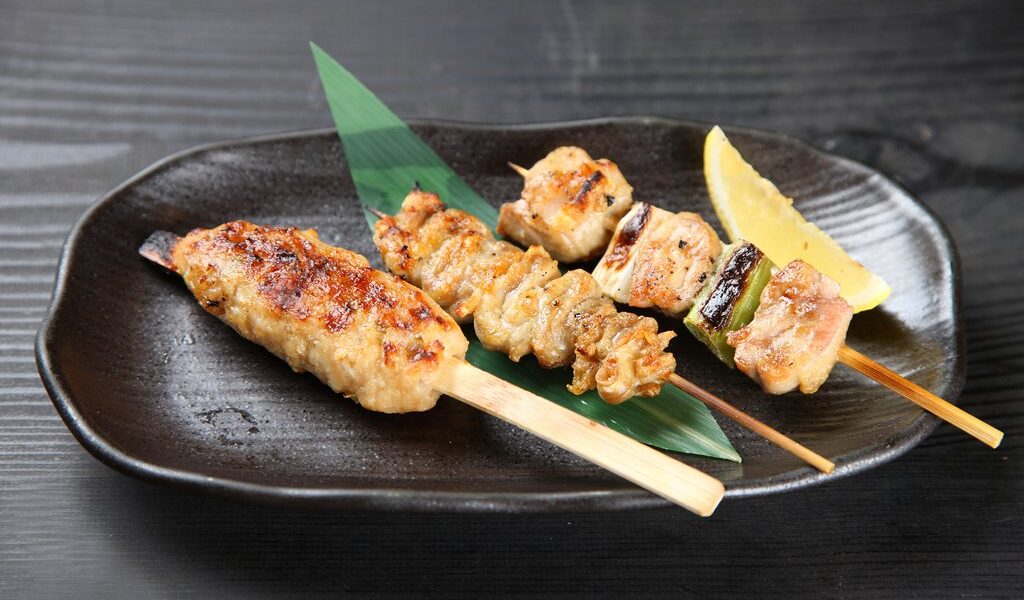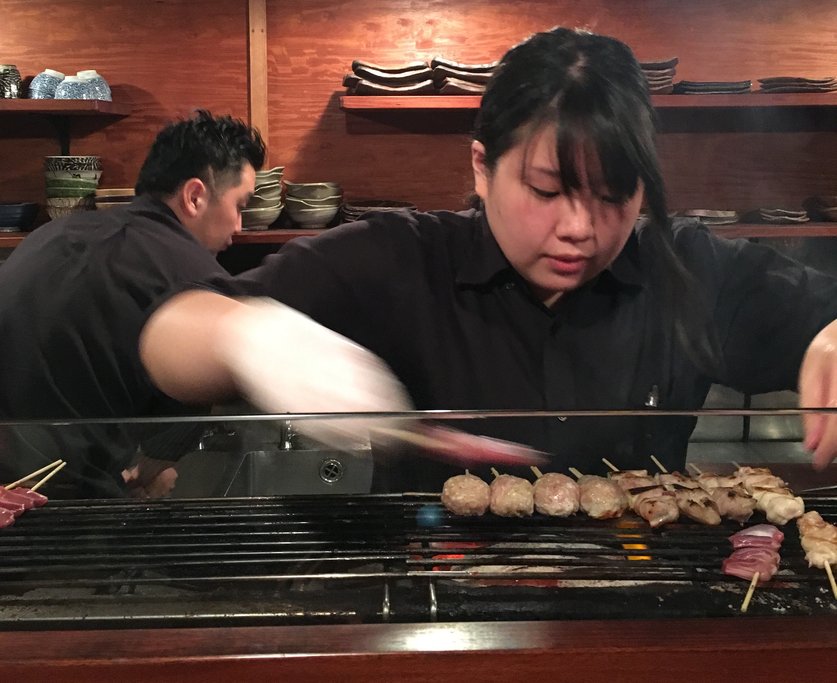
Springy noodles in slow-simmered broth, savory meats grilled medium-rare, and delicate fish for days: Japan is a culinary adventure waiting to be devoured bite by bite. Read on to learn about the diverse flavors (and histories) of Japanese cuisine and the best places to try them.
## Yakitori: A Culinary Journey into Grilled Perfection
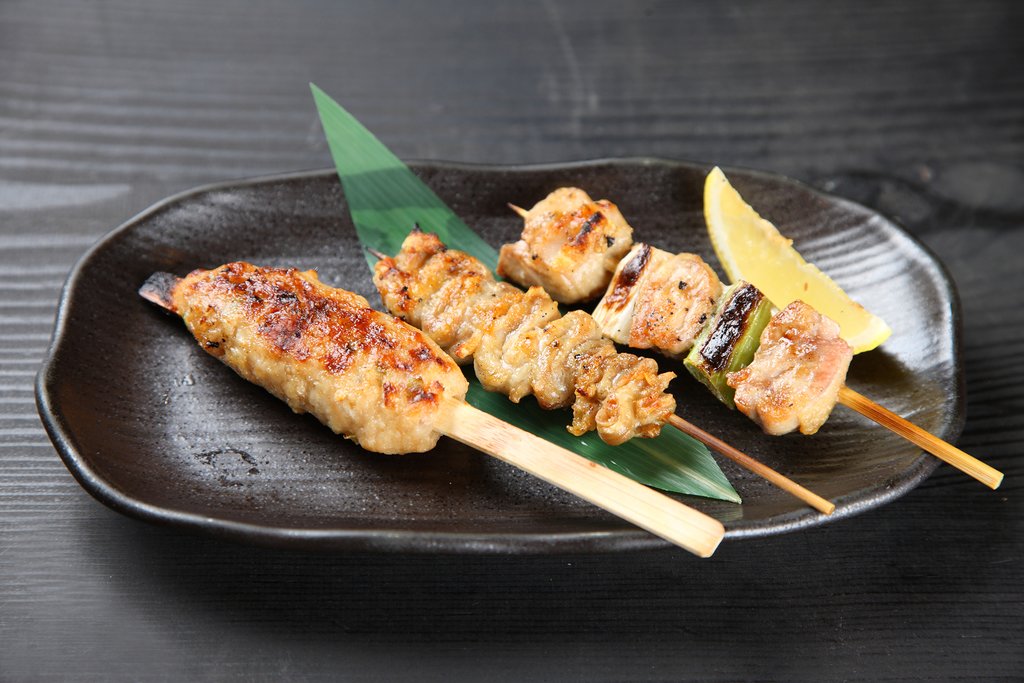
Imagine stepping into a traditional *yakitori* restaurant, a haven where the tantalizing aroma of perfectly seared chicken fills the air, beckoning you closer. The scent is unmistakable, a symphony of savory goodness that promises a delightful culinary experience. This is the essence of yakitori, Japanese-style grilled chicken skewers, a dish steeped in history and crafted with meticulous care. The very word “yakitori” translates to “grilled bird,” a simple yet profound description of this beloved Japanese staple. But yakitori is far more than just grilled chicken; it’s an art form, a celebration of the humble bird in its entirety.
The master chefs, artisans of the grill, approach their craft with a deep respect for the ingredients, treating every part of the chicken with reverence. Their expertise transforms ordinary cuts into culinary masterpieces, each skewer a testament to their skill and dedication.
As you peruse the a la carte menus, you’ll discover a world of flavors and textures. From the succulent, juicy thighs to the delightfully crispy wings, the options are seemingly endless. For the adventurous palate, there are gizzards and chicken hearts, each offering a unique and satisfying bite. And of course, there’s everything in between, ensuring that every diner finds something to tantalize their taste buds.
Many items are adorned with a touch of culinary magic. The *tsukune* (pronounced SKOO-nay), a delectable chicken meatball, is often brushed with a sweet-savory *tare* sauce. This exquisite glaze is a harmonious blend of soy sauce, sake, mirin, and sugar, carefully reduced to create a thick, glossy coating that elevates the humble meatball to new heights. Others, like the tender chicken breast, receive a different treatment, finished with a dusting of shichimi, a vibrant blend of spices that adds a touch of heat and complexity. A dot of fresh wasabi offers a pungent kick, while a generous squeeze of yuzu juice provides a burst of citrusy brightness.
For an unforgettable yakitori experience in Kyoto, make your way to Tarokichi, a beloved institution nestled in the heart of the historic Gion district. As you enter, you’ll be enveloped in a warm, inviting atmosphere, illuminated by soft lighting and accentuated by a stunning wall showcasing a curated selection of premium sake.
To fully immerse yourself in the yakitori experience, take a seat with the locals at the well-worn wooden bar. From this vantage point, you can witness the chef’s masterful command of the sizzling *binchotan* grill, a traditional Japanese charcoal known for its intense heat and clean burn. Alternatively, for a more intimate setting, request a table in the back, ideally one overlooking the restaurant’s serene outdoor garden. No matter where you choose to sit, be sure to sample the shiso-wrapped tsukune, a delightful combination of flavors and textures, and the house-made silken tofu, a delicate and refreshing palate cleanser.
## Ramen: A Soul-Warming Noodle Odyssey
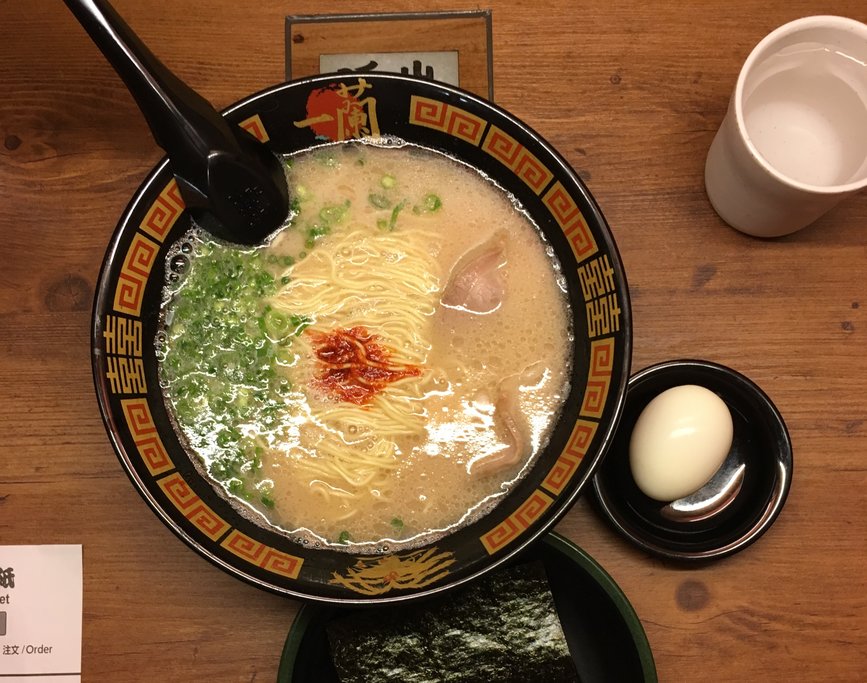
The quest for exceptional *ramen* in Japan is a remarkably effortless pursuit. Unlike some culinary treasures that require extensive searching, these savory bowls of eggy noodles swimming in rich, flavorful broth are ubiquitous throughout the country. You’ll find them gracing the menus of back-alley eateries, bustling train stations, sprawling department stores, and even the most luxurious five-star hotels. Ramen is truly a national obsession, a culinary comfort that transcends social strata and geographic boundaries.
Each region of Japan boasts its own signature version of this beloved dish, a testament to the country’s diverse culinary landscape. However, the most pervasive and widely recognized is undoubtedly *tonkatsu* ramen. This iconic variation features a deeply flavorful bone broth, often simmered for an entire day or even longer, extracting every ounce of umami and richness from the pork bones. The broth serves as the foundation for perfectly cooked, hand-cut noodles, prepared al dente to provide a satisfying chew. The bowl is then artfully topped with thinly sliced scallions, a dollop of fiery chili paste, and delicate cuts of slow-braised pork belly, known as *chashu*, adding a layer of melt-in-your-mouth tenderness.
In any major Japanese city, be sure to seek out Ichiran, a ramen chain that has achieved immense success by masterfully blending high-quality ramen with the renowned efficiency of Japanese service. Ichiran is sometimes playfully referred to as “anti-social” ramen, a moniker that alludes to the restaurant’s ingenious and rather unique method of serving its food.
Patrons are seated at a long bar lined with modular, personal booths, each separated by a removable partition. This innovative design allows diners to savor their hearty bowls of ramen in blissful privacy or, if desired, to remove the partitions and enjoy their meal as a group. It’s a clever system that caters to both introverts and extroverts alike, offering a customizable dining experience that is both efficient and enjoyable.
Like almost all ramen establishments in Japan, Ichiran employs a ticket-dispensing machine for ordering. Upon entering, you simply select your desired ramen and any additional toppings or sides from the machine, pay for your order, and receive a ticket. Once seated in your personal booth, you pass your ticket to the chef, who, within a matter of seconds, returns with a steaming bowl of perfectly cooked ramen. The noodles, often described as angel hair-thin, are bathed in the rich broth and topped with your chosen add-ons. You can further customize your experience by adjusting the spice level to your personal preference. And be sure not to overlook the medium-boiled egg, a quintessential ramen accompaniment that adds a creamy richness to the overall flavor profile.
## Sushi: A Delicate Dance of Flavors and Textures
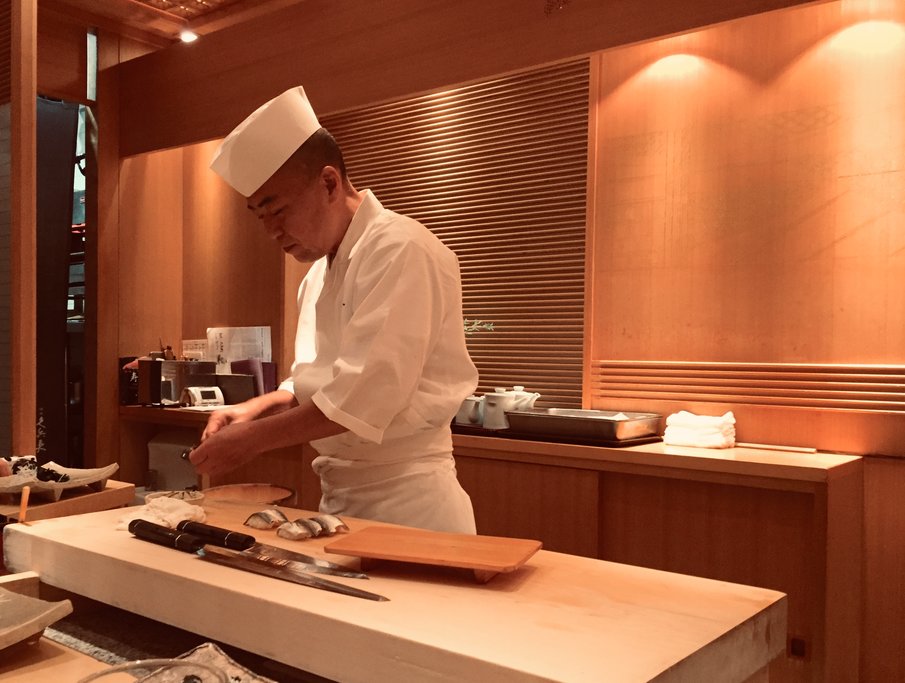
Perhaps the most globally recognized and universally adored of all Japanese cuisine is *sushi*. These exquisite bites of raw seafood artfully placed atop seasoned rice have captivated palates and become a culinary phenomenon around the world. But sushi’s origins are far humbler than its current status suggests. It was originally conceived as a convenient street food, created to provide sustenance for the army of workers who were tasked with rebuilding Kyoto after it suffered devastating fires during the Edo period.
*Nigiri sushi*, the most iconic form of sushi, takes its name from its rice mixture base. The rice, a crucial component of any sushi preparation, is meticulously crafted by delicately folding a precise solution of vinegar, sugar, and salt into a specific varietal of short-grain rice. This particular type of rice is chosen for its high starch content, which gives it the perfect texture and stickiness needed to hold its shape.
The exact ratio of ingredients used in the rice mixture is a closely guarded secret, varying from establishment to establishment. This recipe is often proprietary, passed down from master to apprentice over generations, representing a legacy of culinary knowledge and skill. This dedication to tradition, combined with the use of premium, carefully sourced ingredients, explains why many of the most acclaimed sushi restaurants in Japan can command hundreds of dollars for an *omakase* menu, a “chef’s choice” experience that showcases the very best of their offerings.
In recent decades, a more accessible and affordable form of sushi has emerged: *kaitenzushi*, or “conveyor-belt sushi.” These restaurants have proliferated throughout Japan, offering diners a quick and convenient way to enjoy classic sushi offerings without breaking the bank.
In Kyoto, after indulging in a leisurely stroll down the romantic and atmospheric narrow corridor known as Pontocho Alley, consider popping into Chojiro, a hidden gem located in a basement. This restaurant is renowned for its incredibly fresh bites of briny scallop and fatty tuna belly, two of the most highly prized ingredients in the sushi world. Take a seat at the bar, where an unceasing rotation of colorful sushi rolls parades by on the conveyor belt. Order an ice-cold Sapporo beer to complement your meal, and pluck plates to your heart’s content, savoring each delicate bite of sushi.
## Soba: An Earthy and Nutritious Noodle Alternative
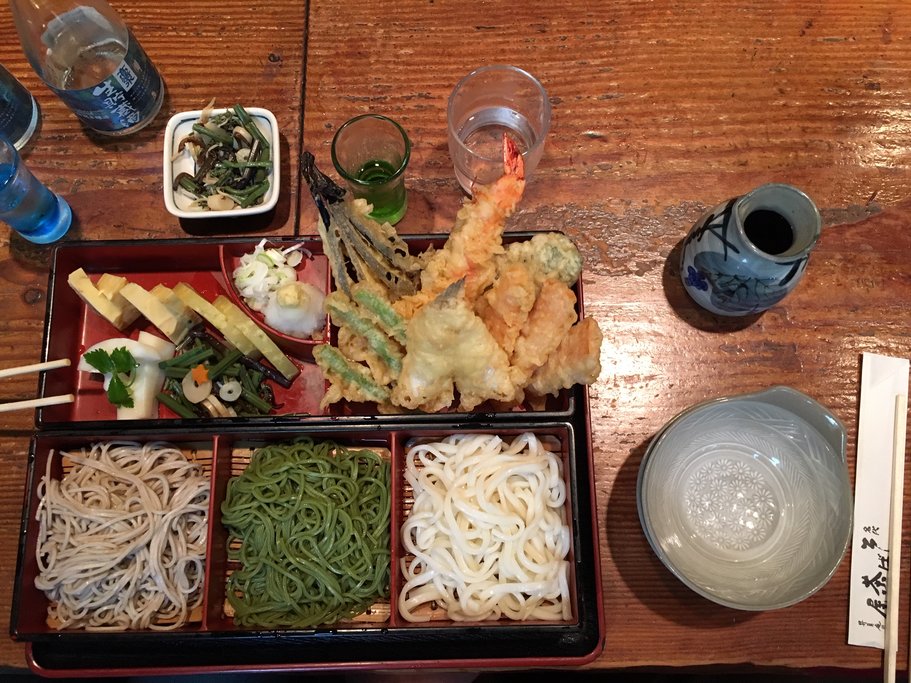
An often-overlooked, but certainly not-to-be-missed, cousin of ramen is *soba*. These thinly cut buckwheat noodles experienced a surge in popularity during the Edo period, prized for their health benefits and rich nutritional profile. Soba is a complete protein source, containing all eight essential amino acids, making it a healthy and satisfying alternative to the more commonly consumed (and less nutritious) white rice.
Today, these earthy and nutty noodles remain a lunchtime staple in Japan, enjoyed both hot and cold, and accompanied by a diverse array of sauces and broths. These flavor enhancers are typically crafted from a base of soy sauce, sake, mirin, and *katsuobushi* (bonito flakes), creating a complex and umami-rich flavor profile.
After working up an appetite while touring the meticulously manicured grounds of the nearby Nijo Castle, treat yourself to a midday meal at the Kyoto classic, Honke Owariya Honten. This family-owned establishment, a soba and sweet shop, boasts a remarkable history, having served hungry patrons since 1465, a testament to its enduring quality and popularity.
During the colder winter months, warm up with a steaming bowl of *kake*, a comforting noodle soup topped with thinly sliced green onion and freshly grated daikon radish, adding a touch of freshness and spice. Alternatively, during the hot and humid summertime, consider cooling down with a tray of *ten seiru*, a delightful meal of chilled, nutty soba noodles, elegantly presented on a bamboo mat. The noodles are meant to be dipped into a cold bath of umami-rich broth and slurped with gusto, accompanied by bites of crisp *tempura* served alongside.
No matter what time of year you visit, soba is the perfect lunchtime option to recharge your batteries without leaving you feeling sluggish in the afternoon. Its light yet satisfying nature makes it an ideal choice for fueling your adventures in Japan.
## Yakiniku: A Communal Culinary Adventure
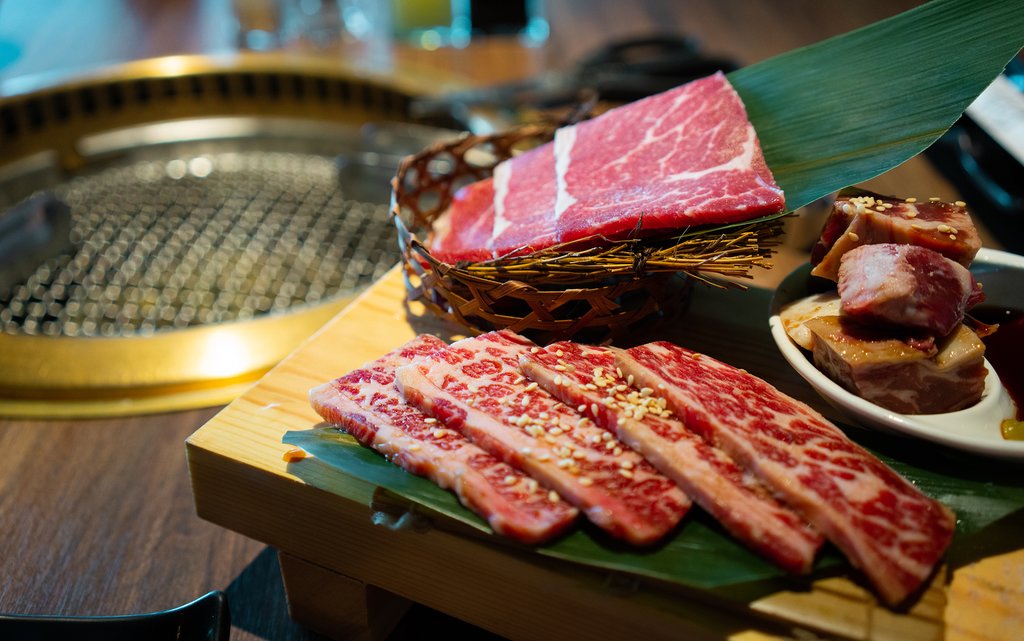
*Yakiniku*, meaning “grilled meat,” offers a uniquely interactive and communal dining experience that is best enjoyed with a group of friends. Imagine savoring decadently marbled bites of beef or pork, seared to your exact liking on a personal grill at your table, and then dunked in a variety of flavorful soy and miso-based sauces.
Yakiniku is a descendant of Korean barbeque, and its rise to prominence in post-war Japan is a fascinating story of culinary adaptation. It wasn’t long before classic Korean dishes like *galbi* were being modified to better suit domestic ingredients and local tastes. Today, yakiniku provides a fantastic opportunity to sample premier Japanese meats, such as *wagyu* beef, without emptying your wallet.
Before embarking on a night of bar-hopping with friends through Tokyo’s vibrant and eclectic Golden Gai, kick off your evening at Rokkasen, a Shinjuku institution that is famous for its packed tables and plates piled high with premium cuts of meat, offal, fresh vegetables, and local shellfish.
For the best value, opt for the all-you-can-eat option, a ninety-minute marathon of meat consumption that will leave you thoroughly sated well into the following morning. For those patrons who are dressed for a night out on the town, bibs are thoughtfully provided—and highly encouraged—to protect your attire from any potential splatters or spills during your grilling endeavors.
B-1446

